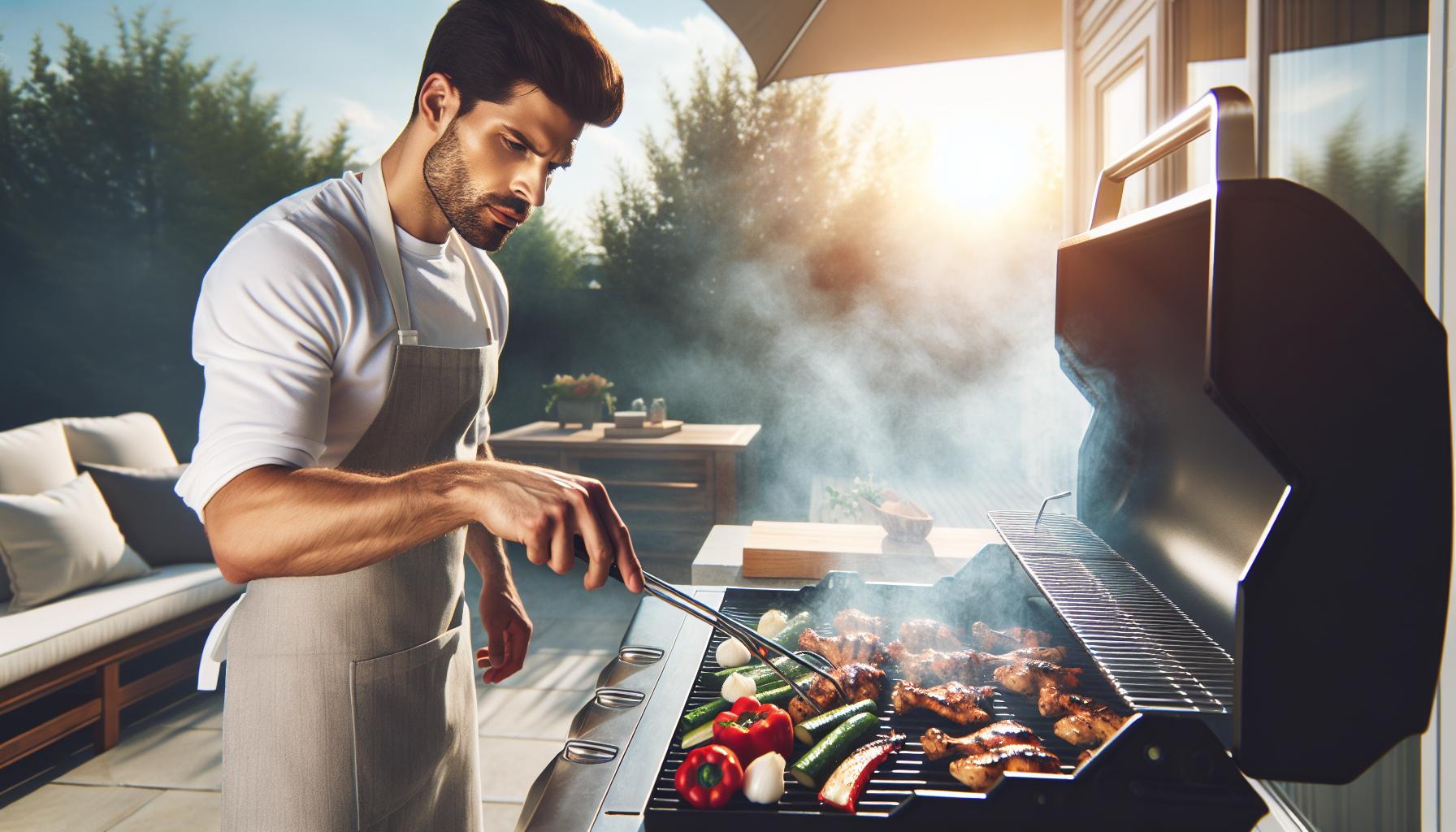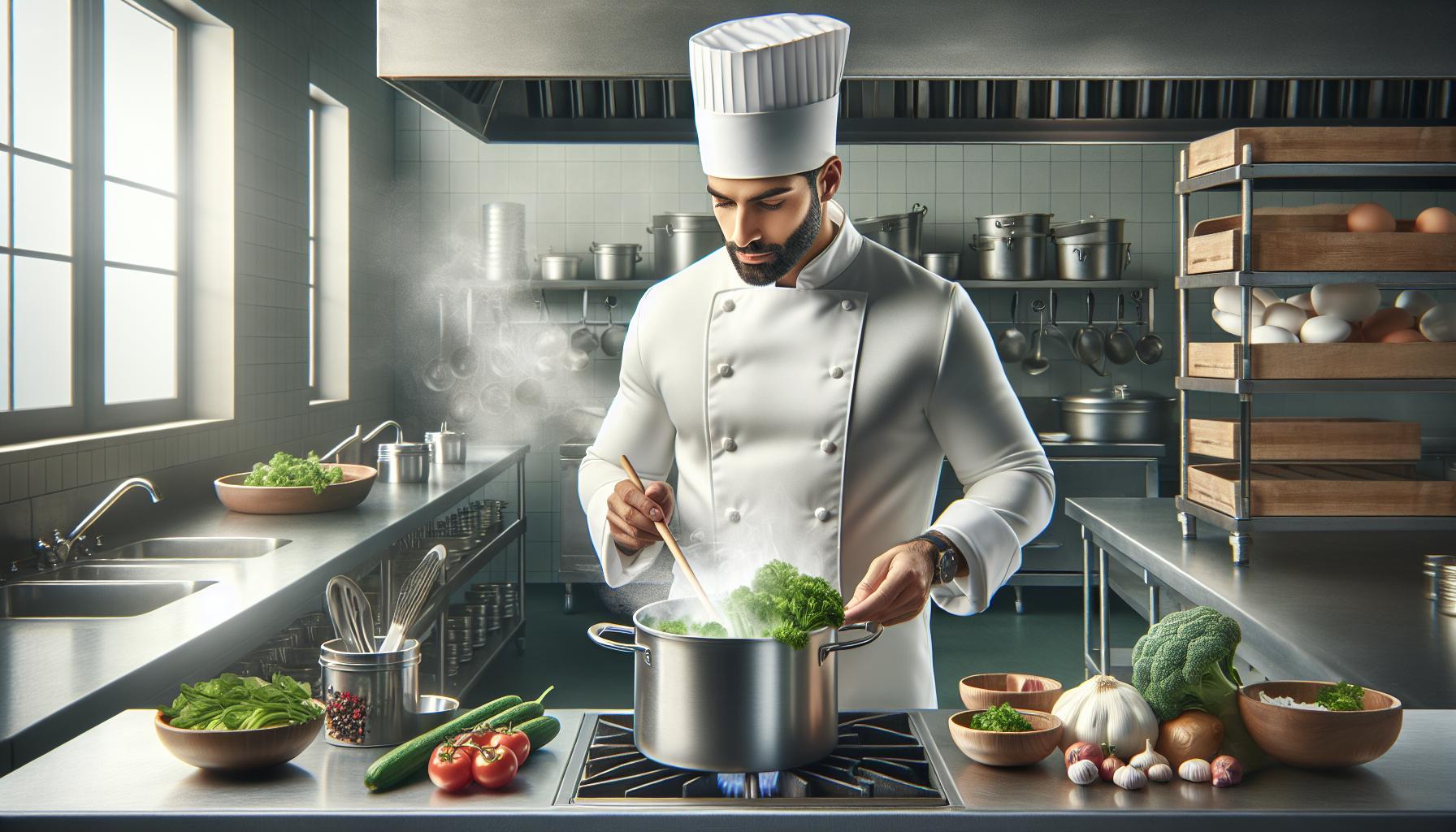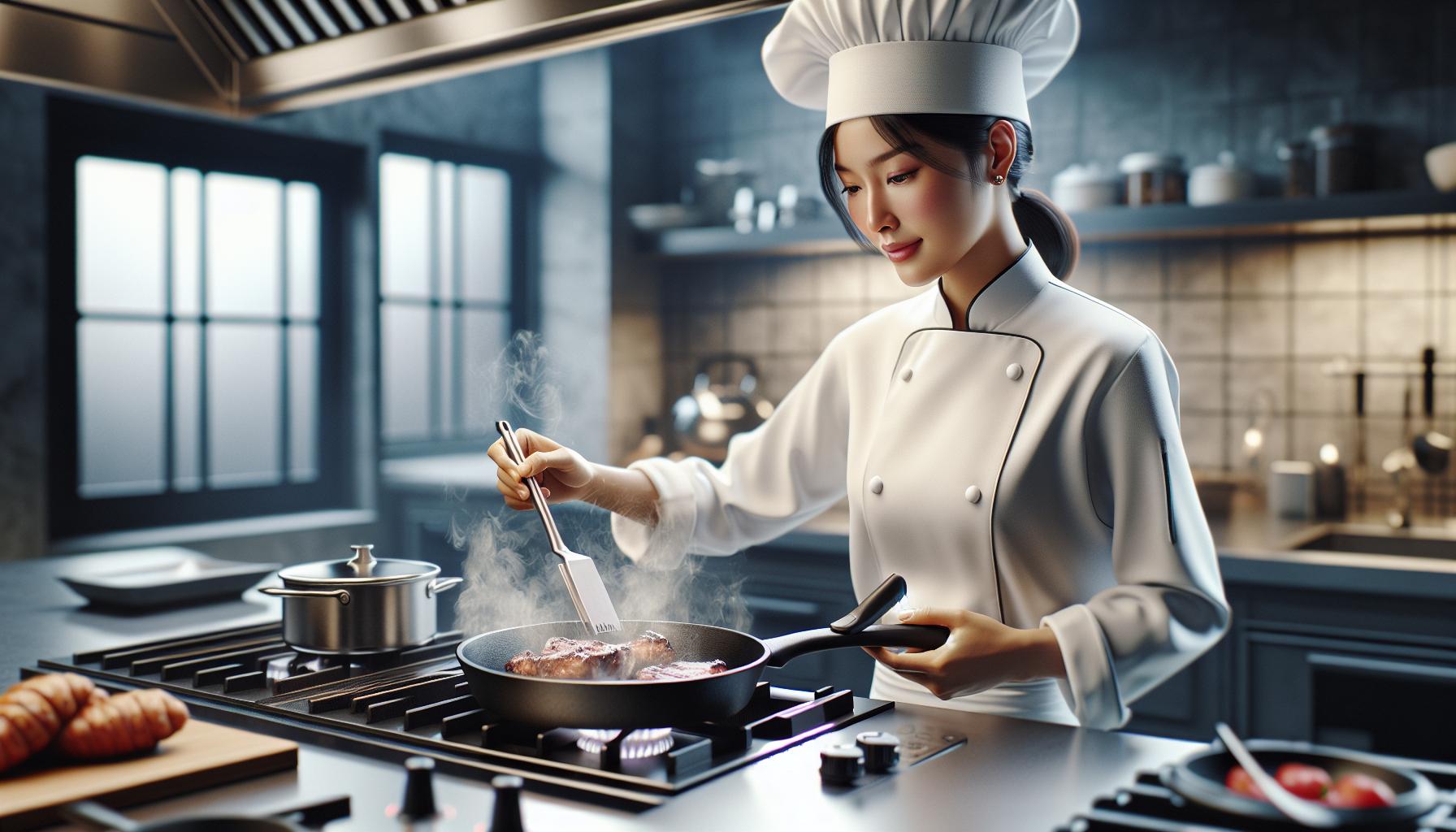
Mastering cooking techniques can transform anyone from a kitchen novice into a culinary wizard. From sautéing to braising and everything in between these fundamental methods create the foundation for countless mouthwatering dishes that’ll make taste buds dance with joy.
Whether it’s the sizzling sound of a perfect sear or the gentle bubbling of a slow-simmered stew cooking techniques aren’t just about following recipes – they’re about understanding the science and art behind food preparation. These time-tested methods have evolved over centuries helping home cooks and professional chefs alike create everything from simple weeknight dinners to elaborate five-star meals. Let’s dive into the exciting world of cooking techniques and unlock the secrets that’ll elevate your kitchen game to new heights.
Types Of Cooking Techniques
Cooking methods fall into two primary categories based on how heat transfers to food. These fundamental techniques create distinct flavors textures through different applications of heat.
Dry Heat Cooking Techniques
Dry heat cooking employs high temperatures without moisture to cook food directly. Roasting transforms large cuts of meat at 375-450°F in an oven creating a brown crust while maintaining internal moisture. Grilling exposes food to direct heat from below reaching temperatures up to 500°F perfect for steaks burgers vegetables. Baking operates at lower temperatures between 300-375°F ideal for breads cakes pastries. Pan-frying uses a thin layer of oil in a skillet to cook food at 350-375°F creating crispy exteriors. Deep-frying submerges food in 350-375°F oil producing uniformly golden-brown results.
Moist Heat Cooking Techniques
Moist heat methods use water steam or other liquids to transfer heat to food. Steaming suspends food above boiling water at 212°F preserving nutrients colors textures. Poaching gently cooks delicate items like eggs fish in liquid between 160-180°F. Braising combines initial browning with slow cooking in liquid at 300°F making tough cuts tender. Stewing immerses small pieces of meat vegetables in liquid cooking at 200-250°F for rich flavors. Boiling rapidly cooks food in water at 212°F suitable for pasta vegetables grains.
Mastering Dry Heat Methods

Dry heat cooking creates distinct flavors through high temperatures without added moisture. These methods rely on hot air or direct heat contact to cook food while developing rich flavors and appealing textures.
Roasting and Baking
Roasting involves cooking food in an oven with temperatures between 350°F and 450°F. The process creates a golden-brown exterior while maintaining moisture inside foods like chicken, beef, pork or vegetables. Baking uses similar temperature ranges but focuses on items that require internal structure development such as breads, cakes or casseroles. The key difference lies in the starting form: roasting transforms raw ingredients while baking creates new structures from combined ingredients.
| Method | Temperature Range | Common Foods |
|---|---|---|
| Roasting | 350°F – 450°F | Meats, vegetables, nuts |
| Baking | 325°F – 425°F | Breads, pastries, casseroles |
Grilling and Broiling
Grilling applies direct heat from below using temperatures ranging from 375°F to 600°F. Foods cook on grates over open flames or electric elements, creating distinctive char marks and smoky flavors. Broiling mirrors grilling but uses top-down heat in an oven, typically at temperatures between 500°F and 550°F. Both methods excel at cooking steaks, chicken, fish or vegetables quickly while developing caramelized exteriors.
Sautéing and Stir-Frying
Sautéing uses a small amount of oil in a pan over medium-high heat to cook bite-sized pieces of food. The technique requires constant movement of ingredients to ensure even browning. Stir-frying employs higher heat and faster cooking times in a wok or large skillet. Both methods preserve textures while creating flavorful results in dishes like vegetable medleys, protein strips or grain dishes.
Exploring Moist Heat Cooking

Moist heat cooking methods use water or steam to transfer heat to food, creating tender textures and preserving nutrients. These techniques involve different liquid temperatures and cooking times to achieve specific results.
Boiling and Simmering
Boiling operates at 212°F (100°C), creating large bubbles that rapidly break the water’s surface. This technique works best for pasta, rice, potatoes and hearty vegetables. Simmering maintains temperatures between 185°F to 205°F (85°C to 96°C), producing small bubbles that gently rise. Professional chefs use simmering for delicate proteins like fish, tender vegetables and egg-based dishes. A rolling boil tenderizes tough cuts of meat in 15 to 20 minutes, while a gentle simmer develops complex flavors in soups and stocks over 1 to 4 hours.
Steaming and Poaching
Steaming uses water vapor to cook food at 212°F (100°C) without submerging it in liquid. This method retains up to 90% of nutrients in vegetables, fish and dumplings. Poaching involves cooking food in liquid between 160°F to 180°F (71°C to 82°C), with small bubbles occasionally rising to the surface. Common poaching liquids include water, broth, wine or milk. Eggs poach in 3 minutes, chicken breasts in 10 minutes and fish fillets in 8 minutes. Both techniques preserve moisture while minimizing fat content.
Braising and Stewing
Braising combines dry and moist heat cooking by first searing food at high temperatures, then slow-cooking in liquid at 300°F (149°C). This method transforms tough cuts like brisket, short ribs and pork shoulder into tender dishes. Stewing submerges small pieces of meat or vegetables completely in liquid, cooking at 195°F to 205°F (91°C to 96°C). Professional kitchens braise large cuts for 3 to 4 hours and stew smaller pieces for 1 to 2 hours. Both techniques create rich sauces from the cooking liquid through reduction and concentration of flavors.
Combination Cooking Techniques

Combination cooking techniques blend multiple heat methods to create complex flavors and textures. These methods use both dry and moist heat at different stages of the cooking process.
Smoking and BBQ
Smoking combines indirect heat with wood smoke at temperatures between 165°F to 250°F to infuse foods with distinct flavors. Professional smokers use specific wood types for different meats: hickory for pork, mesquite for beef, applewood for poultry. The process involves two stages: a dry heat phase that creates a flavorful exterior crust, followed by a moist heat phase from the meat’s natural juices. Competition BBQ teams smoke brisket for 12 to 14 hours at 225°F to achieve optimal tenderness. Modern electric smokers offer temperature control features with digital displays, while traditional offset smokers require manual fire management.
Pan-Roasting
Pan roasting starts with searing food in a hot skillet at 450°F before finishing it in an oven at 350°F. Chefs use this technique for thick cuts of meat, bone-in chicken breasts or fish fillets to achieve consistent doneness. The initial sear creates a golden-brown crust through the Maillard reaction in 3 to 4 minutes per side. The gentle oven heat then penetrates the food evenly, maintaining moisture while developing deeper flavors. Cast iron skillets transfer seamlessly from stovetop to oven, making them ideal for pan roasting. Professional kitchens often pan roast during service because it takes 15 to 20 minutes total cooking time.
Selecting the Right Cooking Method
Each cooking method creates distinct flavors textures by applying specific heat levels to different types of food. Choosing an appropriate technique depends on temperature control food characteristics.
Temperature Considerations
Different cooking methods require precise temperature ranges for optimal results. Dry heat methods like roasting operate between 350°F to 450°F creating brown crusts on meats vegetables. Moist heat techniques maintain lower temperatures with simmering at 185°F to 205°F poaching at 160°F to 180°F. Pan searing demands high heat at 400°F to 450°F to achieve proper caramelization while steaming uses consistent 212°F water vapor. Temperature monitoring prevents overcooking maintains food safety ensures desired results.
| Cooking Method | Temperature Range (°F) |
|---|---|
| Roasting | 350-450 |
| Simmering | 185-205 |
| Poaching | 160-180 |
| Pan Searing | 400-450 |
| Steaming | 212 |
Food Type and Cut Selection
Food characteristics determine the most effective cooking method. Tender cuts of meat like ribeye filet mignon excel with dry heat methods such as grilling broiling. Tough cuts including chuck brisket benefit from moist heat techniques like braising stewing. Delicate fish fillets pair well with gentle methods such as poaching steaming. Dense root vegetables require longer cooking times through roasting boiling. Leafy greens quick cooking vegetables respond best to rapid techniques like sautéing stir frying.
Mastering Various Cooking Techniques
Mastering various cooking techniques opens up endless possibilities in the kitchen. Whether it’s the intense flavors achieved through dry heat methods or the tender results from moist heat cooking these fundamental skills are essential for any aspiring chef.
Understanding temperature control and choosing the right technique for specific ingredients ensures consistently delicious results. From quick-cooking methods like sautéing to slow techniques such as braising each approach serves its unique purpose in creating exceptional dishes.
Armed with this knowledge home cooks can confidently experiment with different cooking methods to create restaurant-quality meals. The journey to culinary excellence starts with mastering these essential techniques that have stood the test of time.


